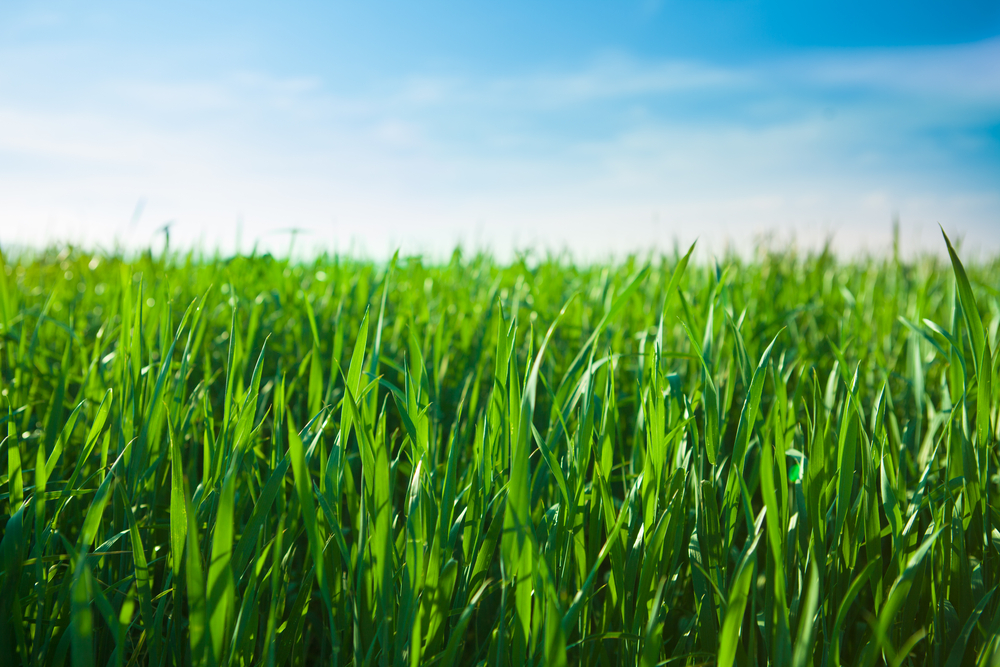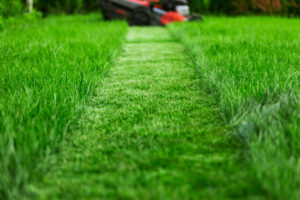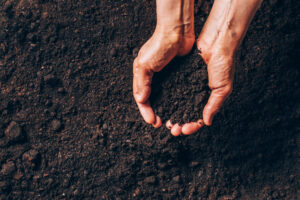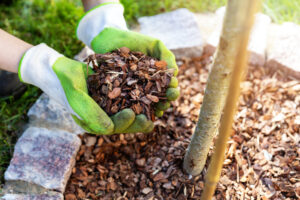
Given the current water restrictions in Calgary due to ongoing drought conditions and a recent critical water main break, homeowners need to adapt their lawn care practices to retain moisture and minimize water usage effectively. Learn more about the critical water main break here and the outdoor water restrictions which are currently in place as of June 18, 2024.
To help during these water restrictions, below are some practical tips to help keep your lawn healthy during this period:
Tips for Retaining Moisture in Lawns:
1. Mow High and Less Frequently

Height: Keep your grass longer, ideally around 3 inches tall. Taller grass shades the soil, reduces evaporation, and promotes deeper root growth, which helps the lawn withstand dry conditions better.
Frequency: Reduce the frequency of mowing. Cutting less often means the lawn retains more moisture and nutrients from the clippings, which act as a natural mulch.
2. Leave Grass Clippings

After mowing, leave the clippings on the lawn. This practice, known as grasscycling, helps retain moisture and return essential nutrients to the soil.
Learn more about the benefits of mulching grass in our blog, “Mulching Grass: Benefits & Tips“.
3. Improve Soil Health

Enhance your soil’s water retention by adding organic matter or compost. Healthy soil holds water better and supports deeper root systems, which are more drought-resistant.
4. Use Mulch

Apply a layer of mulch around trees, shrubs, and garden beds. Mulch helps retain soil moisture, reduce evaporation, and suppress weeds, which compete with your lawn for water.
5. Water Wisely
Once outdoor water restrictions are lifted, be sure to water wisely:
Timing: Water early in the morning or late in the evening when temperatures are cooler to minimize evaporation.
Efficiency: Use targeted watering methods, such as drip irrigation or soaker hoses, to direct water to the root zones of your plants and lawn, reducing waste.
Rain Barrels: Install rain barrels to collect and store rainwater for future use on your lawn and garden.
6. Reduce Lawn Area
Consider replacing parts of your lawn with drought-tolerant plants or ground covers that require less water. Native plants are often well-adapted to local conditions and can thrive with minimal irrigation.
How Long Can Lawns Survive Without Water?
Lawns can survive without water for extended periods by going dormant. Dormancy is a natural survival mechanism where grass turns brown and reduces its growth to conserve water. Typically, cool-season grasses common in Calgary can survive several weeks without water. However, if the drought persists beyond 4-6 weeks without any rainfall, the lawn may suffer more permanent damage and require reseeding or other restorative measures once water becomes available again.
Average Rainfall and Lawn Health
Assuming Calgary receives its average rainfall, which is around 333 mm annually, lawns usually get enough intermittent natural watering to sustain them through dry spells. However, during severe droughts or extended dry periods, it’s important to follow the recommended conservation practices to keep your lawn as healthy as possible with limited water resources.
For more detailed advice on managing your lawn and garden during water restrictions, you can visit Calgary’s official water restriction page (https://www.calgary.ca).
Sources:
Global News, “Alberta facing water restrictions, ‘agricultural disaster’ if drought conditions persist”
City of Calgary, “Critical water main break – June 2024“

Recent Comments